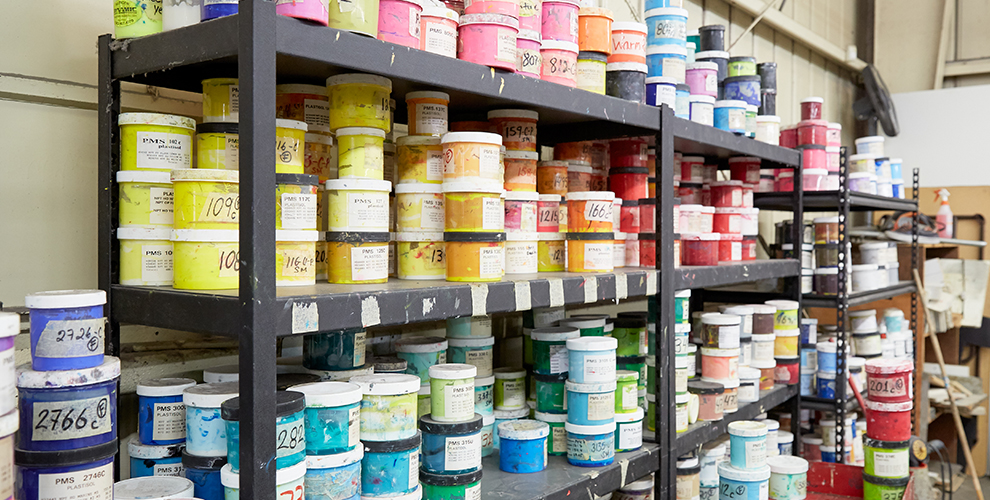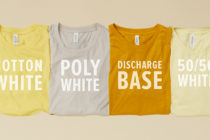As many of you already know, Plastisol inks have lead the US market for a pretty long time. And while they’re popular, did you know that water based inks were actually the first to be used in the screen printing process?
Water Base Inks
Water based ink first came about in the early 1900s, as screen printers were reaching for something to make their vibrant art pieces come to life. Water based ink was somewhat of a secret in the industry, too – something that many only learned when working with a master screen printer. It was also hard to use – water based inks were thin, often transparent, and dried quickly in the screen. These challenges were not only irritating, but they also limited their functionality. Because of these challenges, screen printing projects were limited to those who had really perfected the craft – until the mid 1900s when Plastisol came about.
Plastisol
Plastisol changed the screen printing game the instant it was introduced. It was thicker than water based ink, could easily be stacked, and didn’t dry on the screen. To put it simply, it made it easier to create more complex pieces, print on whatever, and produce more in larger quantities. In fact, it was easy-to-use Plastisol that made the screen printing industry as big as it is today.
These days, however, the tides are turning once again. While Plastisol lead the way as a quick and easy way to create screen printed designs, today, many screen printers are opting to use more user-friendly, advanced water based inks. This transition back to water based ink is two-fold. First, these inks have a super soft hand that is very sought after in today’s market. Second, water based inks are an environmentally friendly alternative for people who want to avoid the chemical phthalate found in plastisol, which can disrupt the body’s hormones. Bigger brands are already looking for alternatives for plastisol, and instead, choosing to work with water based inks. In fact, 90% of the goods produced in Europe today are water based. It shouldn’t be long until the US and Canada markets follow suit.
We are big fans of all products that are kind to the environment, so we love to see companies like Ryonet coming out with planet-friendly water based inks. Check out their line of Green Galaxy Water Based HSA Inks if you are ready to embrace the awesome future of water based printing.
Green Galaxy Ink
What do you think? Is there a certain type of ink that you prefer? If so, why?
Image Credit: Deluxe Screen Printing, Los Angeles






6 Comments
Featherweight Studio
I never use plastisol for my projects or my clients’. I prefer water-based but also use foils and discharge. Many of the screen printers I’ve used have tried to encourage plastisol.
I’d love to read an article like this about discharge. I’ve heard it’s a more noxious process.
BELLA+CANVAS
We definitely plan on writing more articles about all sorts of printing techniques and inks. We’ll make sure to touch on discharge plenty! Keep the feedback coming! We love hearing what you want to learn more about.